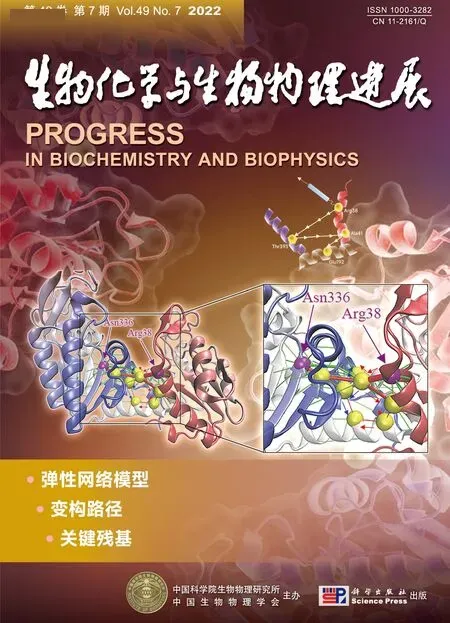Selective Memory Consolidation of The Binary Compound in Feature Discrimination Tasks in Apis mellifera*
2022-07-25YANWeiMENGZhiQiangChang
YAN Wei,MENG Zhi-Qiang,LⅠU Chang
(1)Shenzhen Institute of Advanced Technology,Chinese Academy of Sciences,Shenzhen 518055,China;2)Shenzhen-HongKong Institute of Brain Science-Shenzhen Fundamental Research Institutions,Shenzhen 518000,China;3)CAS Key Laboratory of Brain Connectome and Manipulation,Shenzhen 518000,China;4)Shenzhen Key Laboratory of Drug Addiction,Shenzhen 518000,China;5)Shenzhen Key Laboratory of Viral Vectors for Biomedicine,Shenzhen 518000,China)
Abstract Objective Bees are born with rich olfactory recognition capabilities. Foraging, mating, navigation and social activities all rely on their olfactory system. Ⅰt is an ideal model for studying behaviors and neural mechanisms of olfactory perception, learning and memory. Bees can distinguish a compound odor as a configural character, and can distinguish the components individually as well,but yet it is not clear whether the feature component of a compound odor is stored into the memory as a key cue in a feature-dependent context. Methods Ⅰn the feature-positive (FP:AB+, B-) and feature-negative (FN:AB-, B+)olfactory discrimination tasks,we train bees to learn to associate an odor and a sugar reward.During the mid-term memory(3 h)and long-term memory(24 h)tests,response to the trained odors AB and B,and the feature odor A were tested.Results We found that in the FP task,bees can form stable mid-term and long-term memories of the trained odors.The memory of the feature odor was well stored as the rewarded compound. Ⅰn the FN task, bees were able to distinguish the two trained odors, but their response to the unrewarded compound increased with the passage of time. Conclusion Our results suggest that bees selectively consolidate the reward associated information into long-term memory no matter it is the compound or the components. Ⅰnterestingly, the feature component is not the key factor to be consolidated into the memory system.Our study indicates that selective memory consolidation is supposed to be an important strategy for simple animals to efficiently encode survival-related information.
Key words olfactory discrimination task,feature positive(FP)task,feature negative(FN)task,memory consolidation,proboscis extension response(PER)
Bees are born with rich olfactory recognition ability and can survive in the complex natural environment. The olfactory system of bees participates in various activities in their lives, such as foraging, mating, navigation and social activities.Bees cannot survive on one kind of flower, and because of their short life cycle, their foraging range can radiate several kilometers. The limited number of neurons in their brains must be optimized to identify a few kinds of fragrances to perceive, discriminate and learn almost infinite smells. However, it is still unclear how effectively the bee’s nervous system encodes thus complex information.
Ⅰn the natural state, bees can not only perceive and distinguish various odors, but they also have strong learning and memory abilities[1-2].Differentiating and extracting important information from various stimuli in a complex natural environment is of great significance to survival[3-4].Bees can learn to associate odors with specific stimuli and form memories. This odor predicates a meaningful outcome, such as a reward that conveying information of food sources or an unpleasant experience that representing danger. The strategies of learning have been developed as two theoretical models[5-11]. Elemental learning is to learn a compound as a sum of its components and each component individually represents its value[5,12]. The second strategy is non-elemental (configural) form of learning,which is to learn a compound as a whole that is different from its components[4,13-18]. Evidence has shown that the recognition and learning efficiency of each component in a compound are not equivalent,depending on the identification of the key component which is supposed to be easier to recognize[19]The proboscis extension response (PER) has been widely used to train bees and test their olfactory memories,in order to understand how compound odors are encoded[20-22]. Bees can extend their proboscis in response to the odor that associated with a reward and suppress their response to the unrewarded odor[21,23].The formation, consolidation and retrieval of memory is a dynamic process, which has been shown to be regulated by a variety of molecules and neural circuits[24-28]. What characteristics of the odor are consolidated into the memory and what the dynamic change of the formed memory is have not been fully understood.
When an odor is presented with sucrose, a bee can learn that the odor predicts a reward. When the bee detects the sucrose-associated odor again, even if no sugar water appears, bees extend their proboscis to show the memory of the rewarded odor. Feature positive (FP:AB+,B) and feature negative (FN:AB-,B+) tasks have been used to study neural mechanisms of learning and memory in a variety of animals, such as rat[29-31], moth[32], honeybee[29-35], fruit fly[36],etc.Hypothesized by the elemental learning strategy,component A in the compound AB is considered as a key factor to distinguish AB from B. The key factor plays a role to facilitate forming appetitive olfactory memory in the FP task,or suppress the response to the compound as an inhibitor in the FN task.Ⅰn this study,we employed a well-established feature-dependent classical olfactory conditioning paradigm in honeybees and investigated whether the feature component is written into memory as a key processing factor during memory consolidation. We trained bees to learn an association of one odor with sucrose and the other odor without. We then tested the PER to the trained odors and the feature component at 3 h and 24 h after the training. 3 h and 24 h after the training reflect the dynamic changes of the feature component into the mid- and long-term memory, respectively[37].We found that honeybees selectively consolidate reward-associated odors into mid- and long-term memory, but do not consolidate the information using the feature component as the key cue. Our data suggest that selective consolidation and storage of environmental cues may be an important strategy for lower animals to efficiently encode survival-related information.
1 Materials and methods
1.1 Materials
1.1.1 Experimental animals
Bees were purchased from the apiary of Yunnan Agricultural University. Worker bees were collected from the entrance of the hive in the morning (9:30-10:30) or afternoon (14:00-15:00). Each bee was individually trapped into a small glass vial and placed on ice for anesthesia. After the bee is anesthetized.Then the bee was harnessed into a plastic tube. The antennae, proboscis and mandibles were allowed to move freely, and other parts are fixed with strips of adhesive tape to restrict its movement[20]. Each bee was fed 2 µl of 1.5 mol/L sucrose solution after being harnessed 0.5 h, and then moved into an incubator with a temperature of 32°C to 33°C and a relative humidity of 60% to 70%. At 21:00 in the evening,each bee was fed 40 µl of 1.5 mol/L sucrose solution and left undisturbed until the appetitive olfactory conditioning took place on the next day.
1.1.2 Odorants
1-Nonanol (A) and 1-Hexanol (B) (Sigma,Germany)were used as conditioned stimuli(CS).3µl of the stock solution of each odor was dropped on a piece of filter paper, and then inserted into a syringe of the odor supply device. 3 µl of 1-hexanol and 3 µl of 1-nonanol were dropped on the different sides of the same filter paper, and the two odors volatilize in the syringe to form the compound odor. 0.5 µl of a 1.5 mol/L sucrose solution was applied by a pipette to
the bees as an unconditioned stimulus(US)that paired with the reinforced conditioned stimulus(CS+).
1.1.3 Odor device
We modified the odor supply device according to a previous study[38]to provide compound odors or component odors to bees. The device (Figure 1a)included an air pump to provide constant air delivery,and the constant air flow rate is controlled at 2 L/min.The device also included four branch trachea, branch1provided a constant background airflow to avoid the influence of irrelevant stimuli caused by mechanical sensory changes, and branches2to4provided the compound odor and component odors. The 3 odor delivery branches were controlled by electromagnetic valves.Each branch was connected to a syringe with a filter paper absorbed odor sources, and 4 branches of trachea were merged into an outlet tube.The flow exit was placed facing to the bee’s antennae at a distance of 1.5 cm and an exhaust vent was placed 10 cm behind the bee ensuring that all released odors were eliminated out of the experimental room.
1.2 Behavioral experiment
Ⅰn order to balance the differences in learning and memory that may be caused by the natural preferences of odors, we divided the FP task and FN task into two reciprocal training groups respectively(Table 1). (1) Ⅰn the FP task, the compound odor AB was presented with sucrose and the component odor B without, and thus A was considered as the FP component in group1; in group2, the component odor A was presented without sucrose and B was considered as the FP component. (2) Ⅰn the FN task,the compound odor AB was presented without sucrose, the component odor B was presented with sucrose, and thus A was considered as the FN component in group1; in group2, the component A was presented with sucrose, and B was considered as the FN component.

Table 1 Training group design
All tested bees experienced appetitive olfactory conditioning. One bee was placed on the training device at a time, allowed an acclimation for 30 s, and then started a test for responsiveness to sucrose.Ⅰndividuals who did not extend their proboscis when one of the antennae was touched by sucrose solution were excluded from the experiment. The odor presentation time was 6 s.After 3 s of presentation of the rewarding odor (CS+ ), 0.5 µl of sucrose was applied to touch the antennae to elicit a PER,and then the bee was rewarded by feeding the sucrose solution for 3 s; non-rewarding odor (CS-) was presented for 6 s without the sucrose pairing(Figure 2a,3a).During the test, only odors were presented. The experimenter recorded the occurrence of the PER: if the bee extended its proboscis during the first 3 s of the odor delivery, the score was recorded as “1”, and if no response in the first 3 s,it was recorded as“0”.
There were 12 conditioning trials in the training phase, and the inter-trial interval (ⅠTⅠ) was 15 min.Odors were presented in a pseudo-random sequence(Figure 2a and 3a):CS+-CS--CS--CS+-CS--CS+-CS+-CS--CS+-CS--CS--CS+. All bees in the same task were divided into two test groups (3 h group and 24 h group) after the training.During the test, not only the trained odors AB and B,but also the untrained “feature” odor A were tested in a sequence of AB,B,and A.
1.3 Statistical analysis
A 3-way-ANOⅤA was used to analyze whether there were significant differences in PER to CS+ (or CS-) between group1and group2.To determine whether the training curves from group1and group2can be pooled for further analysis, a mixed-effects analysis with fixed effects of trials (1-6), tasks (FP and FN task), conditions (CS+ and CS-) as well as interactions of trials×tasks, trials×conditions, tasks×conditions, and trials×tasks×conditions were applied.When no significant differences of the main factor and interactions were detected, the data of group1and group2of each task were pooled for further analysis,otherwise were analyzed independently.
A Kruskal-Wallis test followed by Dunn’s multiple comparisons test were used to analyze whether the PER to CS+ , CS- and the feature component odor were different at 3 h and 24 h after training,respectively.
2 Results
2.1 Bees have no naïve preference of the compound odor and component odors
Ⅰn order to rule out the naïve preference of the odors, we first tested PER to the compound odor AB,the component odor A, and the component odor B.Bees did not show significant difference in PER rate of odors (Figure 1b, Kruskal-Wallis test,F(3,105)=2.337,P=0.310 8).Therefore, we used these odors for feature-dependent task training and test their mid- and long-term memory.
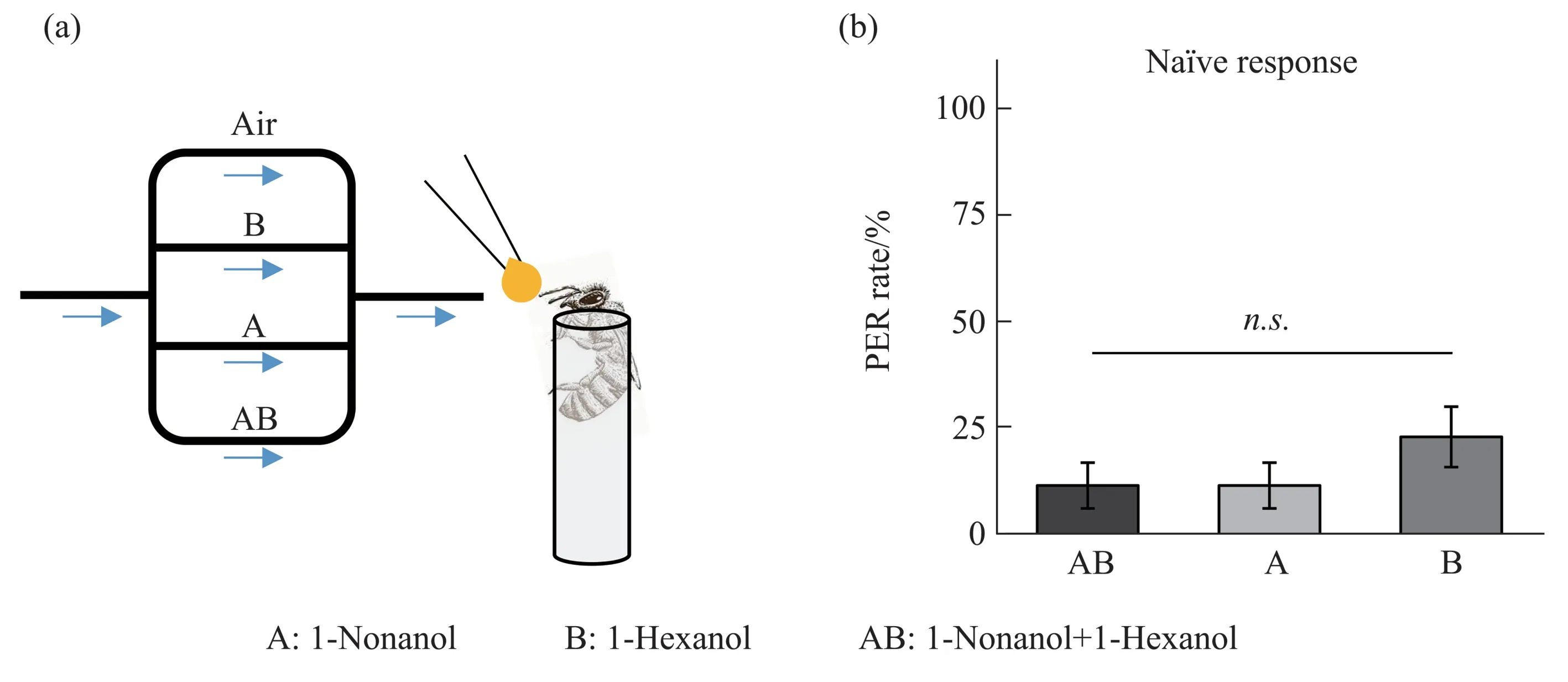
Fig.1 Schematic diagram of the apparatus of olfactory conditioning in restrained honeybees and test for naïve responses to the compound and component odorants
2.2 Bees extract feature-positive olfactory information and consolidate them into long-term memory in feature-positive discrimination task
To determine if the data of group1and2can be pooled for further analysis, we performed a 3-way ANOⅤA analysis. Ⅰn the FP task, the main factor of tasks between AB+/B- and AB+/A- did not show significant difference (F(1,1244)=2.602,P=0.107 0), but the interaction of trials×tasks×conditions was statistically significant (F(5,1244)=3.121,P=0.008 3).This suggested that the tasks can be affected by other two variables, and the data of group1and2were analyzed separately.
Ⅰn the FPtask(Figure 2a),the percentage of PER to the compound odor(AB)paired with sucrose gradually increased from the 1st to the 6th trial, while the percentage of PER to the odor without sucrose (B- or A-)gradually decreased(Figure 2b,c),suggesting that bees can discriminate the compound odor from the componentodor andlearntheassociation.
Ⅰn the 3-hour and 24-hour memory tests of group1, there was a significant difference of averaged PER between the compound odor and the component odor,suggesting that the formed appetitive memory lasts long(Figure 2d)(3-hour test:H(3,69)=34.57,P<0.000 1,ABνs. B:P<0.000 1; 24-hour test:H(3,69)=11.07,P=0.003 9, ABνs.B:P=0.007 6). Ⅰnterestingly, bees expressed mildly lower PER to the feature odor A than the compound odor at 3-hour test (ABνs.A:P=0.024 8)and no difference at 24-hour test(ABνs.A:P>0.999 9) (Figure 2d). Bees expressed significantly higher PER to the feature odor than the CS-odor at 3-hour test (Aνs. B:P=0.003 7) and 24-hour memory test(Aνs.B:P=0.019 7)(Figure 2d).
Ⅰn both 3-hour and 24-hour memory tests of group2,there was a significant difference of averaged PER between the compound odor and the component odor, (Figure 2e) (3-hour test:H(3,78)=24.42,P<0.000 1,ABνs.B:P<0.000 1;24-hour test:H(3,78)=18.54,P<0.000 1, ABνs.B:P=0.000 4). No difference was detected between the feature odor B than the compound odor at 3-hour and 24-hour tests(ABνs.A:P>0.999 9) (Figure 2e). Bees expressed significantly higher PER to the feature odor than the CS- odor at 3-hour test (Aνs. B:P=0.000 1) and 24-hour memory test(Aνs.B:P=0.000 8)(Figure 2e).
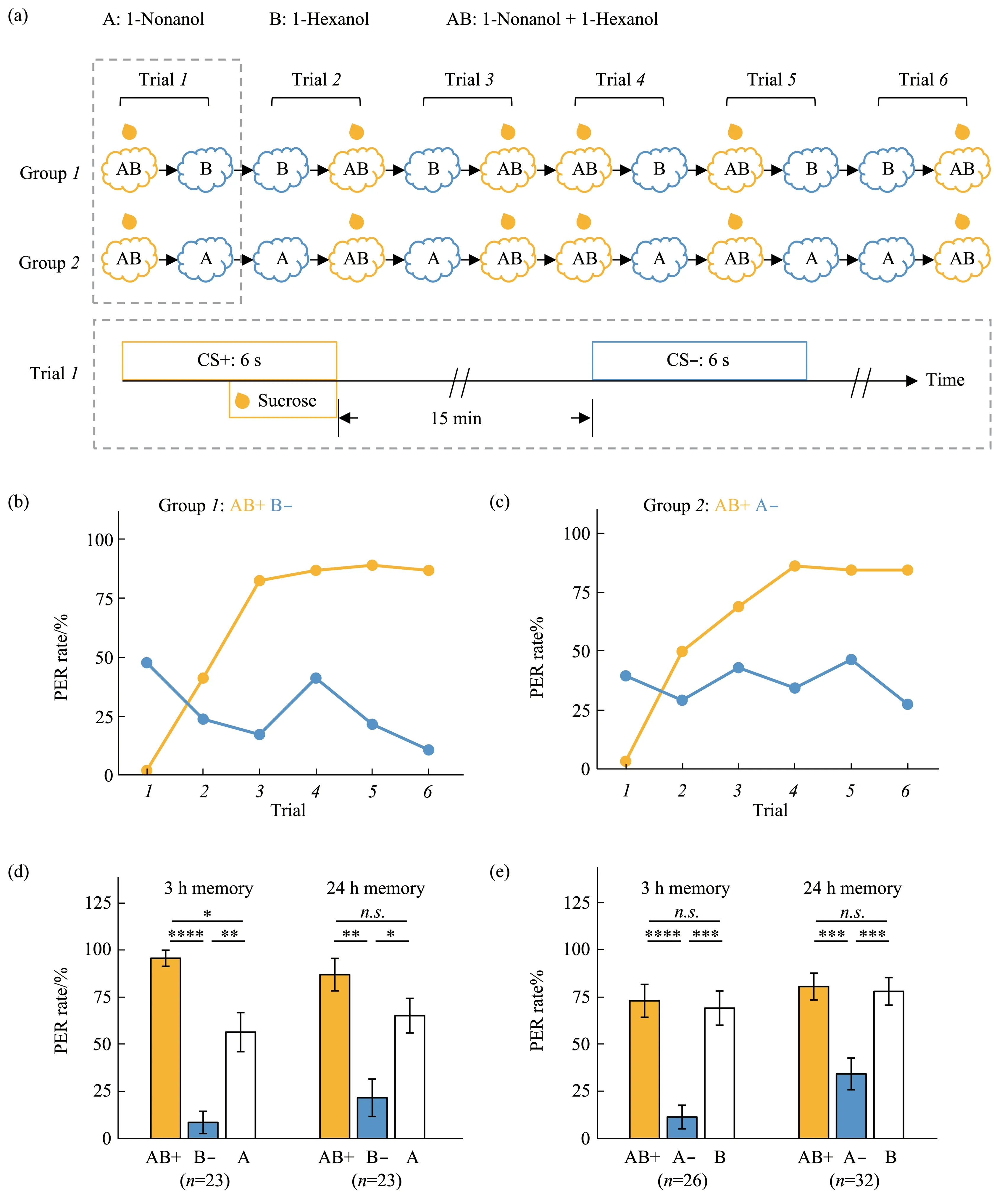
Fig.2 Learning traces and memory tests in the feature-positive discrimination task
These results suggested that bees can extract feature component from the compound and consolidate it into mid- and long-term memory(Figure 2d,e).
2.3 Bees extract reward-associated information and consolidate into long-term memory in feature-negative discrimination task
Ⅰn the 3-way ANOⅤA analysis of the FN task,the main factor of tasks between B+/AB- and A+/ABdid not show significant difference (F(1,576)=0.000 64,P=0.979 9), and the interaction of trials×tasks×conditions was not statistically significant (F(5,576)=1.428,P=0.212 4).This suggested that the pooled data of group1and2could be further analyzed.
Ⅰn the FN task (Figure 3a), the percentage of PER to the component odor (A or B as CS+) paired with sucrose gradually increased from the 1st to the 6th trial, while the percentage of PER to the compound odor without sucrose (AB as CS- )gradually decreased (Figure 3b-d), suggesting that bees have a strong learning ability in the FN task.
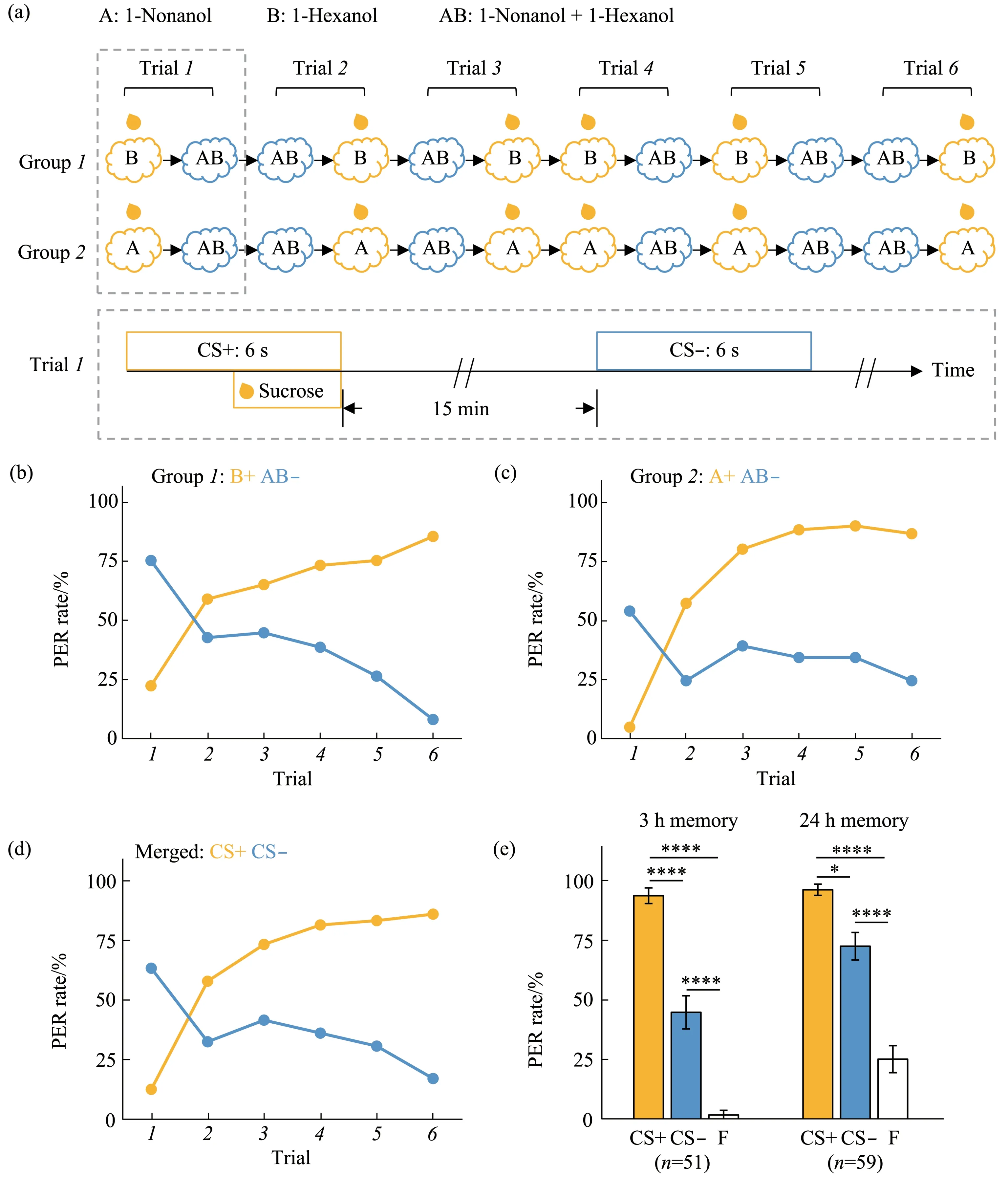
Fig.3 Learning traces and memory tests of feature-negative discrimination task
Ⅰn the 3-hour and 24-hour memory tests,significant differences of averaged PER to the CS+odor and CS- odor were detected, suggesting that bees can consolidate the formed memory during the training into mid- and long-term memory (Figure 3e)(3-hour test:H(3,153)=86.48,P<0.000 1;CS+νs.CS-:P<0.000 1;24-hour test:H(3,177)=67.73,P<0.000 1;CS+νs. CS-:P=0.021 2)). Ⅰn addition, PER to the feature component (F) was significantly lower than to the CS+ compound odor (P<0.000 1) (Figure 3e).Ⅰnterestingly, bees expressed a strong difference in responding to the unrewarded compound (CS-) and the feature odor (P<0.000 1)(Figure 3e).These results suggested that bees may recognize the feature odor as a novel odor different from the compound,or bees can discriminate two components that one of them was not associated with the reward. Bees possibly extract the reward-related component from the compound which is dominantly processed, and selectively consolidate it into the long-term memory.
3 Discussion
3.1 Honeybee is an ideal model to study olfaction processing
Honeybees live in a rich smell environment, and their foraging, mating, navigation, and social activities strongly rely on their keen olfactory system.Honeybees have only a few weeks for foraging in their life, however sources of flower and other food are scattered in space and time, thus bees have to develop impressive capacity in discrimination and generalization according to the odor quality and quantity[39]. Bees also develop a powerful ability to learn an association of odors that encode relevant information to their survival and adaptation in the complex environment[18,40]. A lot of research on bee olfactory coding[1], including the identification and generalization of single odors,odor concentration,and its feature coding over time,etc.have been conducted.However, it is still unclear how to process the learned information and store it in long-term memory after memory consolidation. This study employed the feature-dependent appetitive olfactory discrimination paradigm to explore whether the feature odorant is the key cue to be processed into the memory. As summarized in a working model (Figure 4), we found that bees can successfully distinguish the compound odor and component odors, but bees selectively store reward-related information into the long-term memory irrelevant to the key cue.
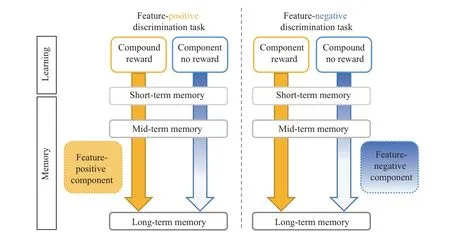
Fig.4 Model of selective consolidation of reward related information into long-term memory in honeybees
3.2 Honeybees may recruit different strategies during learning and memory processes
One of the important functions of the brain is to learn and remember information closely related to food.Studies in mice,fruit flies,and bees have shown that they can store food quality, such as textures,concentration, nutrition, taste,etc. into long-term memory.Ⅰn order to maintain high foraging efficiency,bees not only have the ability to identify key odor molecules and concentration information[41-42], but also have the ability to encode a compound as a configural character that different from its composed components[33-34]. Many studies have revealed that honeybees can distinguish different compound odors through elemental learning or non-elemental learning strategies. Pelzet al.[35]employed olfactory and mechanical sensations as a compound stimulus paired with a reward,and the mechanical sensation without a reward, and found that bees can learn this task well and distinguish the olfactory stimulus as the feature component. The bimodal positive or negative conditioning paradigms, such as combining 4 odors(A, B, C, D) in pairs, each odor has the same chance of pairing a reward (such as AB+, CD+,AC-, BD-),and elements positive and compound negative (A+,B+ , AB- ) or elements negative and compound negative (A-, B-,AB+) paradigms interpret the nonelement learning strategies of bees, that is to say, bees can detect compound odors as a different value from a simple sum of its components[10,34].
However, which strategy bees employ to process and storage into the memory system is not well addressed.Ⅰn this study,our results are consistent with many previous studies in learning the FP and FN tasks. Different from previous studies, we also performed the mid-and long-term memory tests of the trained odors and the feature odor. We found that during the 3-hour and 24-hour tests in the FP task,the bees’ response to the feature odor is significantly correlated with the rewarding compound odor,suggesting a process of extracting and storing the feature component into the memory. Ⅰnterestingly, in the FN task, although bees still distinguish the rewarding component and the non-rewarding compound statistically significant during the tests, but the PER to the unrewarded compound odor is significantly increased compared to the sixth training session. This result can be explained to a certain extent by the element theory[3]: the compound itself isn’t presented with a reward, but one of the components is combined with the reward which is learned by bees, thus the rewarded component(element) suppresses the memory of unrewarded compound and processed into the memory. However,the non-elemental strategy may also explain the phenotype of the discrimination of the compound and the component during the test. Ⅰt is necessary to decode the characteristics of the memory processing of compound odors at the level of neurons and neural circuits.
3.3 Honeybees can be developed as a reliable biosensor for drug detection
Ⅰn recent years,honeybees have been recruited as sensitive biological detectors as specially-trained dogs in finding concealed illegal drugs due to their high sensitivity and memory system[43]. Bees have been shown that they have better sensation in volatiles associated with heroin and cocaine than cockroach and moth[43]. However, it is unknown which tasks honeybees can perform better in extracting the key substances and process into long-term memory.Ⅰn this study, we found that there was a high correlation between the feature component and the compound in a FP task but not in a FN task. Bees have strong learning and generalizing ability which allows them to be a potentially powerful biosensor in different contexts.An important point of hint here, it would be better to choose a more effective paradigm (such as FP task) and optimize the training protocol to maximize reliably behavioral responses in the long run and minimize false positives or negative responses at the usage of biosensors.
4 Conclusion
Although extracting and processing the feature component information seems to be an important strategy during the learning phase, we found that honeybees selectively consolidate and store information which is associated with a reward into long-term memory. Ⅰt is well accepted that only important information will be stored into the brain.Consistent with this view, our results support that the information related to a reward is consolidated or even strengthened over time instead of consolidation of the key component during the learning.
Bees live in a world full of senses and need to process a lot of valuable or disruptive information.Recognizing and distinguishing different stimuli in an effective and simple way is important for reducing the space and energy required for memory storage. Bees develop an efficient strategy to adapt to the reality due to their short foraging lifespan as well as the scattered flower sources and other food sources in space and time. Selective memory consolidation can help bees process and store only the most relevant information,and it is of great significance for lower animals with brains of only 960 000 neurons for better adaptation and survive to the complex environment[37,44].
Our study provides a piece of behavioral evidence, and further analysis of neural coding mechanisms is still needed. Ⅰmportantly, honeybees have a great potential to be developed as highly sensitive biosensors in detection of specific drugs for certain circumstances, which requires systematic investigation for optimal practices.
